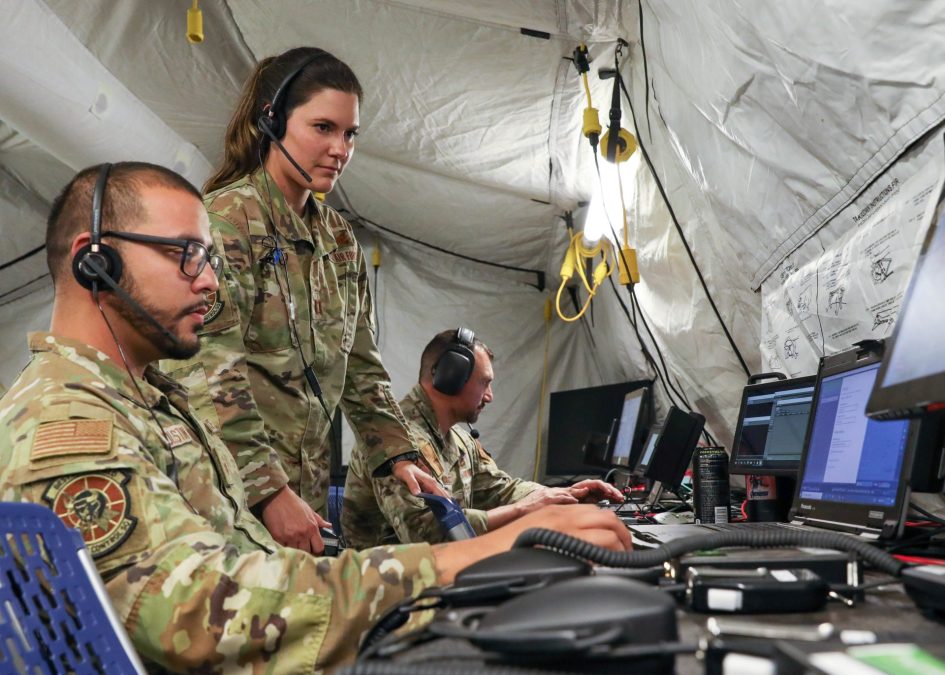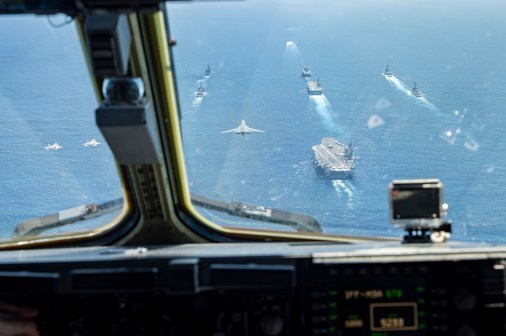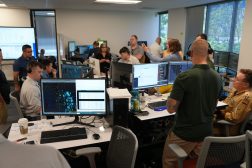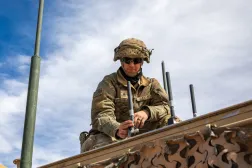Air Force looks to scale up C2 prototyping, experimentation efforts

NATIONAL HARBOR, Md. — As part of its effort to incrementally deploy modernized command-and-control systems, the Air Force is planning to conduct more deliberate and targeted experimentation with new C2 kits in the coming months.
In the three years since the creation of the Air Force’s command, control, communication and battle management (C3BM) program office, the service has shifted towards an acquisition strategy for modernizing C2 that focuses on continuously deploying the new technologies in increments. Much of the capability development has been done with warfighters during various experiments and wargames, and the PEO is now taking lessons from its early successes to move forward.
“We’ve really got to figure out how to robust up our prototyping and experimentation work,” Maj. Gen. Luke Cropsey, program executive officer for C3BM, told DefenseScoop on the sidelines of AFA’s Air, Space and Cyber conference. “All of the major C2 breakthroughs that we’ve had in the last five years are almost all a direct result of things that happened through either an exercise [or] experimental approach.”
To scale up, Cropsey said his team is making sure they’re mapping out the different exercises — such as the Air Force’s Bamboo Eagle and U.S. Indo-Pacific Command’s Valiant Shield — from an “end-to-end perspective.”
The key isn’t just to randomly ingest capabilities into exercises, but instead deliberately drop prototype systems into venues based on what the specific technology is and what questions the PEO is trying to answer, he said.
“And then to do that effectively, we’ve got to actually expand the systems that we’re putting into those environments, and we’ve got to expand the number of things that we’re connecting inside of that so that we can move beyond the individual system-level verification and actually get to the whole mission thread,” Cropsey added.
All of the systems Cropsey and his team are working on are part of the Air Force’s DAF Battle Network, which is the service’s contribution to the Pentagon-wide initiative known as Combined Joint All-Domain Command and Control (CJADC2). The warfighting concept seeks to connect the sensors and shooters from across the U.S. military and international partners under a single network, enabling faster, more effective decision-making and force deployment.
Bolstering C2 prototyping and experimentation is a key tenet under the PEO C3BM’s new strategic framework, released in July. It includes three critical anchors — the first of which is to establish what Cropsey called “operational credibility and responsiveness” with operators by frequently delivering new capabilities that specifically target current operational gaps.
“You’ve got to earn your way to the next problem,” he said. “If you don’t solve this one, you don’t even have a hearing for the next one.”
In some cases, that means deploying new C2 solutions that may not be perfect but still provide a near-term improvement over older systems. The strategy allows PEO C3BM to work directly with operators and release new kit in iterative drops known as major releases, wherein each increment features new capabilities and other upgrades.
“The historical snag in the experimentation and prototyping arena is that people would go out there and they would do some really interesting things, put together really interesting capabilities — and then nothing,” Cropsey noted. “So I think the key is actually designing an end-to-end system that has experimentation and prototyping baked into it, but it’s baked into it in a way that allows you to flow it straight into a program that’s ready to catch it.”
The Air Force has found success in its strategy with the first major release of the Tactical Operation Centers-Light (TOC-L), a compact and scalable battle management system able to create an integrated air picture from hundreds of feeds. After deploying 16 initial TOC-L kits in 2023, the service is gearing up for the next major release of the system.
Cropsey noted that key feedback from the first major TOC-L release focused on the system’s usability and amount of power it actually needs, adding that the PEO is still working through the exact size and weight of the entire kit.
“And then there’s this constant tension between capability and cost that we’re actively trying to manage, as well, when it comes to the number that you can field and the capability that any individual unit has,” he said. “So there’s an analysis there that we’re still working through.”
The same strategy is being used for the Air Force’s Cloud-based Command and Control (CBC2) program, which recently replaced legacy air defense systems within North American Aerospace Defense Command (NORAD) and U.S. Northern Command.
The next iteration — dubbed CBC2+ — will feature the same DevSecOps pipeline, but the Air Force is looking to expand the capability beyond NORAD and Northcom’s initial requirements, Cropsey noted.
“Now we’re starting to look at it as, how do I start to provide a unified user experience that is up and down echelon?” he said. “And how does that kind of turn into the common unifying factor around our C2 enterprise as a baseline?”






